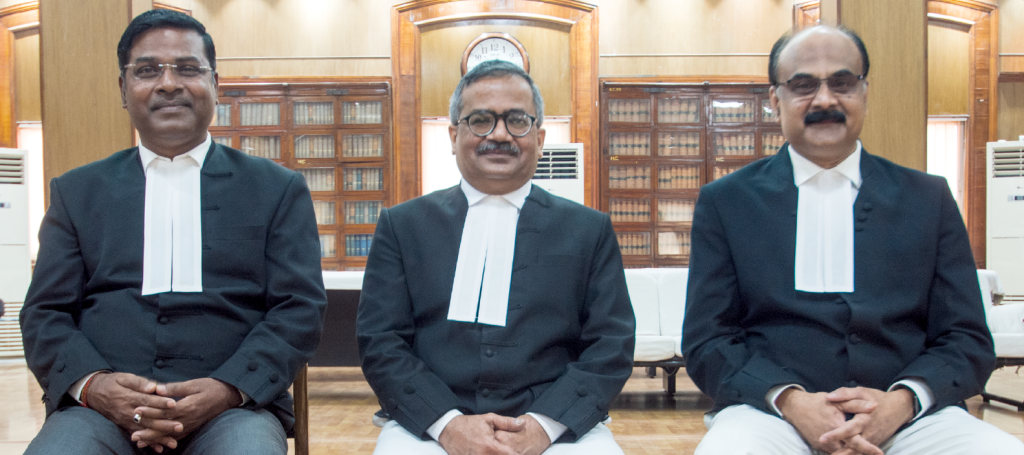Introduction

Committee for the preparation of the Annual Report, 2021
The Annual Report 2021 is the second such publication, after 2015, by the High Court of Orissa. It is intended to present to the reader a comprehensive statement of the functioning and the activities of the High Court. The working of the judiciary has a significant impact on the lives of the people in every section of the society and on the working of the institutions both State and non-State. It, therefore, becomes imperative, in a democracy governed by the rule of law, and under a written Constitution, that the working of the judiciary, one of the organs of the State, is made known to everyone.
This report is broadly divided into six chapters. It also has a set of Appendices at the end to explain in greater detail the information contained in the report.
Chapter I of the report is exclusively about the High Court. It begins with a brief historical account of the High Court, information about its judges, its Administrative Committees and the Registry.
During the year 2021, there has been significant augmentation of the infrastructure of the High Court and the District Courts. This includes many changes in the High Court building and the shifting of the Odisha State Legal Services Authority (OSLSA) as well as Orissa High Court Legal Services Committee to a new building named “Aain Seva Bhavan”. This new building has on the second floor, a state-of-the-art Meditation Centre in one wing and the Permanent and Continuous Lok Adalat of the High Court, operating as such for the first time, in the other wing. A modern Arbitration Centre is located on the top most floor of this building. The section on ‘Infrastructure’ describes all of these changes.
Information and Communication Technology (ICT) has enabled the High Court to augment the justice delivery system both in the High Court as well as in the District Courts in a major way in 2021. Many of these are first-time initiatives not tried earlier elsewhere in the country. A separate chapter titled ‘ICT Initiatives’ has therefore been included.
Consistent with the need for increased transparency of the working of the High Court, there are separate sub-chapters concerning ‘case statistics’, an abstract of the financial accounts of the High Court and all other ‘activities’ including the steps taken by the institution to combat the COVID-19 pandemic.
Information on allied organs such as the OSLSA and the Odisha Judicial Academy has been included in Chapter II of the report. The role played by the Advocate General’s establishment, the office of the Assistant Solicitor General of India for the High Court of Orissa as well as the Orissa High Court Bar Association have been highlighted in Chapter III. Relevant information relating to all the 30 Judgeships (Districts) of the State has been presented in Chapter IV with one section being devoted to each district. Significant Judgements delivered by the High Court have been summarized in Chapter V. The concluding Chapter discusses the challenges ahead and the need for introspection.
The year 2021 was, in more ways than one, a year of transformation for the High Court as well as the District judiciary. Several innovative ideas were implemented. Technology was used to make the judicial process more transparent and accessible to the litigant public. A substantial number of Courts in the cadres of District Judge, Senior Civil Judge and Civil Judge including Special Courts were established. New Court Complexes were made functional at many locations across the State. The existing infrastructure in the High Court as well as the District Courts was refurbished with the idea of providing a better working environment for the employees.
Transparency and accountability are the sine qua non for the legitimacy of the judiciary, one of the pillars of Constitutional democracy in India. The publication of the Annual Report, 2021 is intended as a step towards that end.
The Committee wishes to thank Shri Rabi Rath, Sculptor for the portrait on the cover and Dr. Manjushree Patnaik, Guest Faculty, NLUO for her assistance with the copy editing of some portions of this report. The committee also deeply appreciates the contributions of Kandi Himaja, Tiasha Mukherjee and Samyak Mohanty, Research Assistants at the High Court of Orissa.
